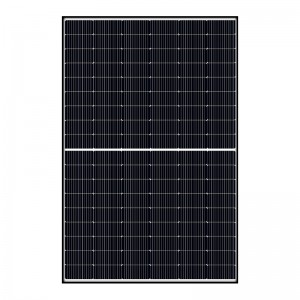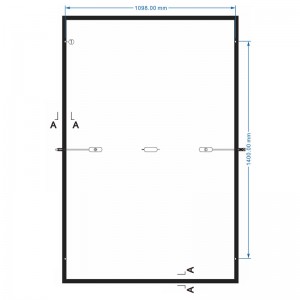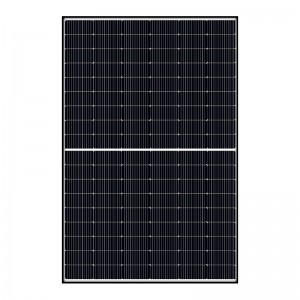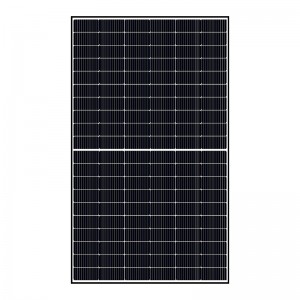M10 MBB, N-Type TopCon 108 half cells 420W-435W black frame solar module
Ultra-high Power Generation/Ultra-high Efficiency
Enhanced Reliability
Lower LID / LETID
High Compatibility
Optimized Temperature Coefficient
Lower Operating Temperature
Optimized Degradation
Outstanding Low Light Performance
Exceptional PID Resistance
| Cell | Mono 182*91mm |
| No. of cells | 108(6×18) |
| Rated Maximum Power(Pmax) | 420W-435W |
| Maximum Efficiency | 21.5-22.3% |
| Junction Box | IP68,3 diodes |
| Maximum System Voltage | 1000V/1500V DC |
| Operating Temperature | -40℃~+85℃ |
| Connectors | MC4 |
| Dimension | 1722*1134*30mm |
| No.of one 20GP container | 396PCS |
| No.of one 40HQ container | 936PCS |
12-year warranty for materials and processing;
30-year warranty for extra linear power output.

* Advanced automated production lines and first-class brand raw material suppliers ensure that solar panels are more reliable.
* All series of solar panels have passed TUV, CE, CQC, ISO,UNI9177- Fire Class 1 quality certification.
* Advanced Half-cells, MBB and PERC solar cell technology, higher solar panel efficiency and economic benefits.
* Grade A quality, more favorable price, 30 years longer service life.
Widely used in residential PV system, commercial & industrial PV system, utility-scale PV system, solar energy storage system, solar water pump, home solar system, solar monitoring, solar street lights, etc.
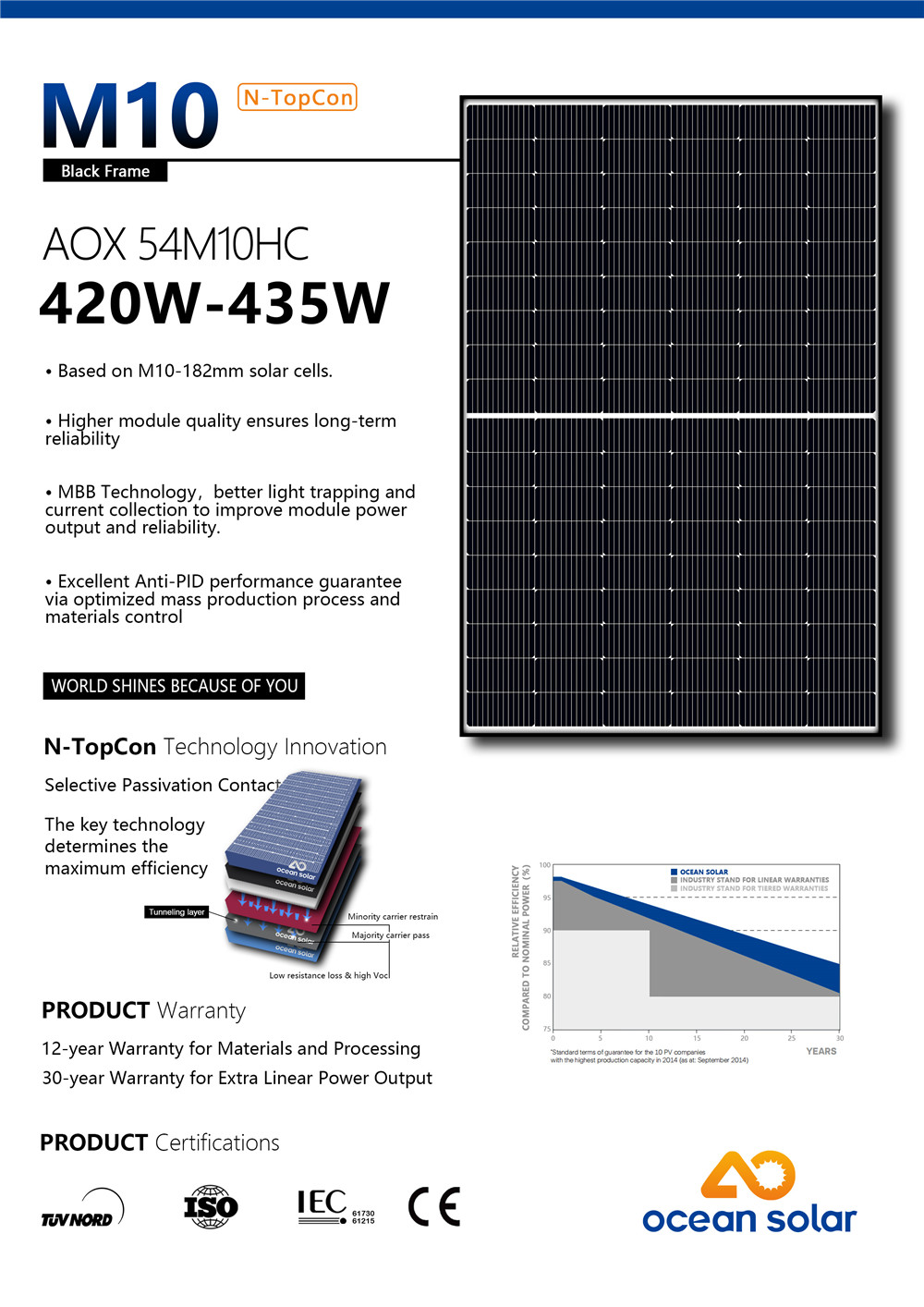
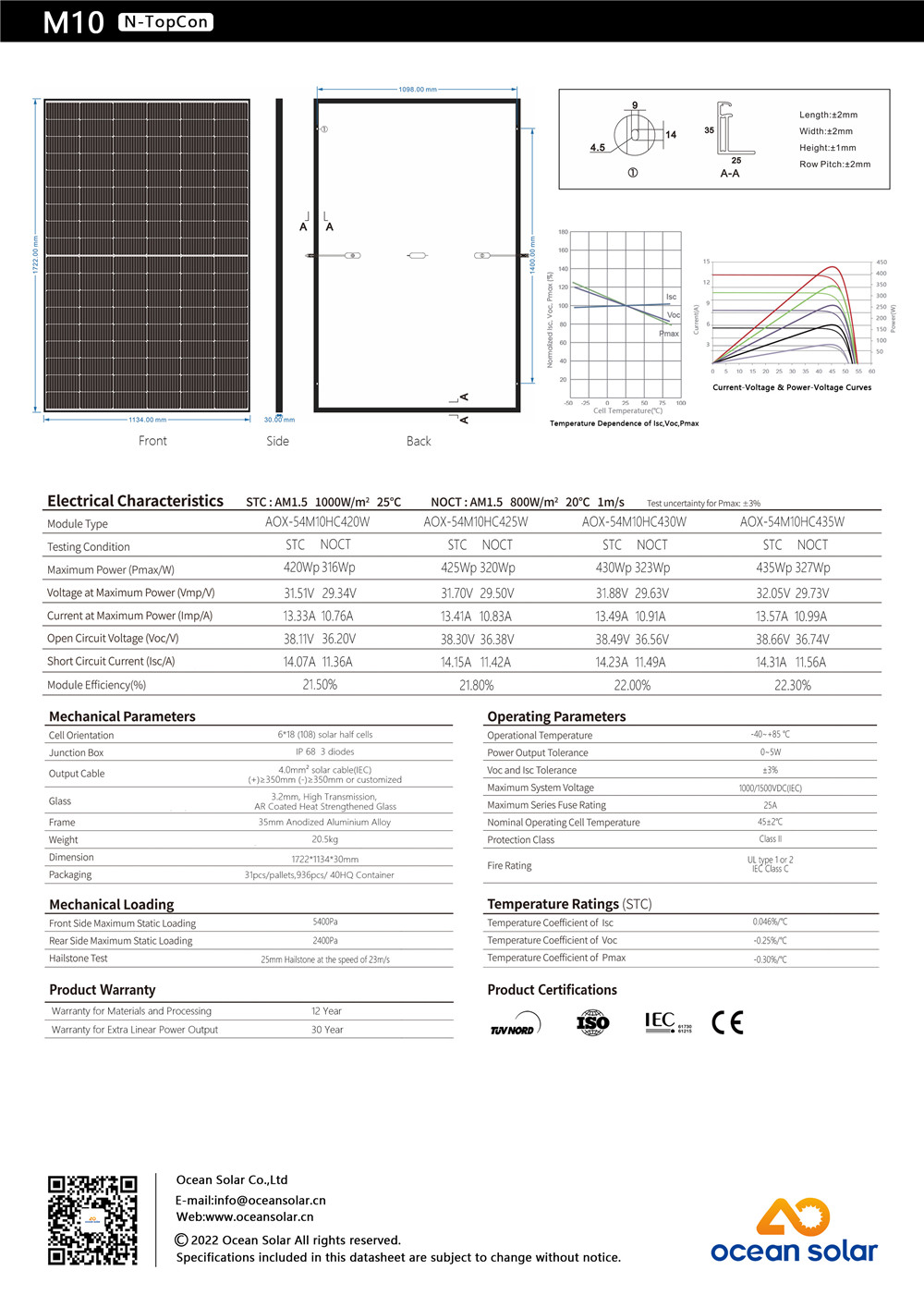
Solar energy is a renewable energy source that can be used to generate electricity through photovoltaic (PV) cells. Photovoltaic cells are usually made of silicon, a semiconductor. Silicon is doped with impurities to create two types of semiconductor materials: n-type and p-type. These two types of materials have different electrical properties, which make them suitable for different uses in solar energy production.
In n-type PV cells, silicon is doped with impurities such as phosphorus, which donate excess electrons to the material. These electrons are able to move freely within the material, creating a negative charge. When light energy from the sun falls on a photovoltaic cell, it is absorbed by silicon atoms, creating electron-hole pairs. These pairs are separated by an electric field within the photovoltaic cell, which pushes electrons towards the n-type layer.
In p-type photovoltaic cells, silicon is doped with impurities such as boron, which starve the material of electrons. This creates positive charges, or holes, that are able to move around the material. When light energy falls on a PV cell, it creates electron-hole pairs, but this time the electric field pushes the holes toward the p-type layer.
The difference between n-type and p-type photovoltaic cells is how the two types of charge carriers (electrons and holes) flow within the cell. In n-type PV cells, photogenerated electrons flow to the n-type layer and are collected by metal contacts on the back of the cell. Instead, the generated holes are pushed towards the p-type layer and flow to the metal contacts on the front of the cell. The opposite is true for p-type PV cells, where electrons flow to the metal contacts on the front of the cell and holes flow to the back.
One of the main advantages of n-type PV cells is their higher efficiency compared to p-type cells. Due to the excess of electrons in n-type materials, it is easier to form electron-hole pairs when absorbing light energy. This allows more current to be generated within the battery, resulting in higher power output. In addition, n-type photovoltaic cells are less prone to degradation from impurities, resulting in longer lifetimes and more reliable energy production.
On the other hand, P-type photovoltaic cells are usually chosen for their lower material costs. For example, silicon doped with boron is less expensive than silicon doped with phosphorus. This makes p-type photovoltaic cells a more economical option for large-scale solar production that requires large amounts of materials.
In summary, n-type and p-type photovoltaic cells have different electrical properties, which make them suitable for different applications in solar energy production. While n-type cells are more efficient and reliable, p-type cells are generally more cost-effective. The choice of these two solar cells depends on the specific needs of the application, including desired efficiency and available budget.


